What are Irrigation Systems?

Irrigation systems are methods and techniques used to supply water to plants or crops in agricultural fields, landscaping, gardens, and other areas where water is required for plant growth. Irrigation systems can range from simple, low-tech methods like using a watering can or hose to more advanced systems that use pumps, pipes, and sprinklers.
Some common types of irrigation systems include
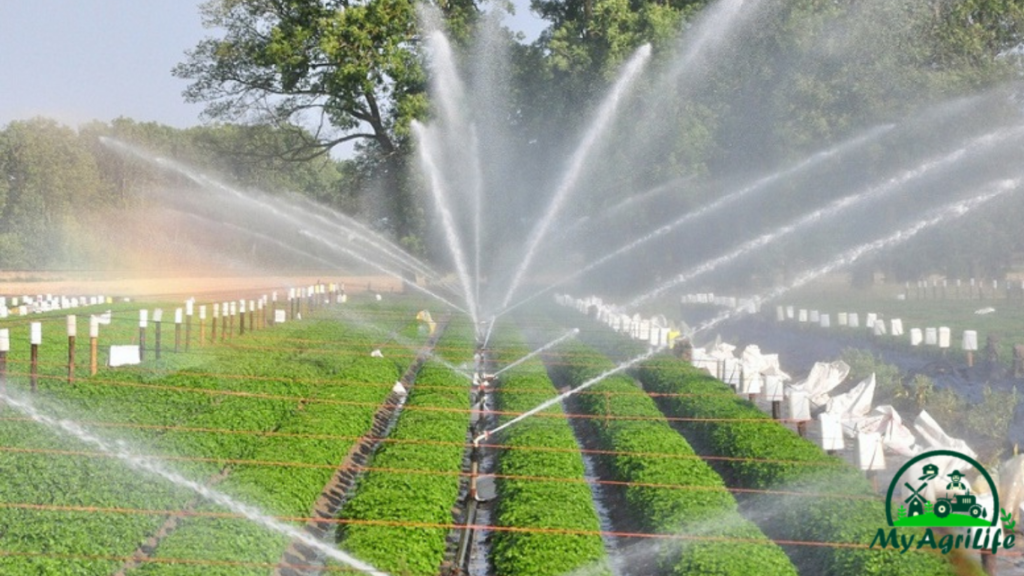
1.Sprinkler systems: These systems use sprinkler heads attached to pipes to distribute water over a large area. The water is distributed evenly across the field or garden, and the sprinkler heads can be adjusted to provide different levels of water distribution.
2.Drip irrigation systems: Drip irrigation systems use small tubes or emitters to distribute water directly to the roots of plants. This system is highly efficient because it reduces water waste by delivering water directly to the roots where it is needed.

3.Flood irrigation systems: This system involves flooding the field or garden with water and allowing it to soak into the soil. This method can be wasteful and inefficient, but it is still used in some areas where other methods are not feasible.
4.Subsurface irrigation systems: This system involves burying pipes or tubes underground, which deliver water directly to the roots of the plants. This method is highly efficient and reduces water waste.
Overall, irrigation systems are essential for maintaining healthy crops and plants, and they can help conserve water by providing the right amount of water at the right time.

Irrigation systems are methods and techniques used to supply water to plants or crops in agricultural fields, landscaping, gardens, and other areas where water is required for plant growth.
Irrigation systems can range from simple, low-tech methods like using a watering can or hose to more advanced systems that use pumps, pipes, and sprinklers.
The History and Development of Irrigation Systems
In ancient Egypt, the Nile River provided a reliable source of water for irrigation. Farmers used simple methods like levees and canals to direct water to their fields. In Mesopotamia, farmers used a system of canals and levees to irrigate their crops, with some canals being over 100 kilometers long.
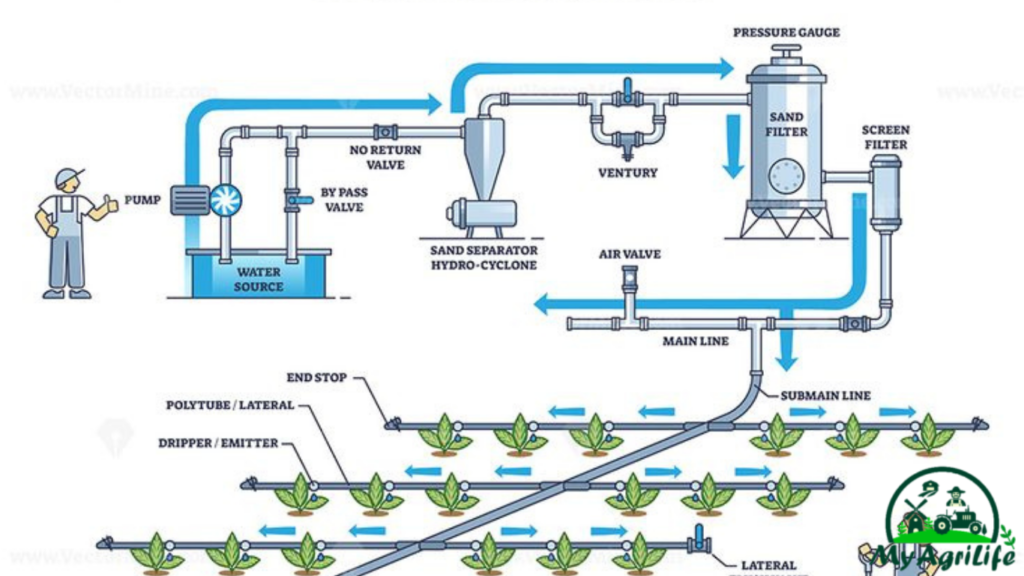
As civilizations grew and agriculture became more advanced, irrigation systems became more sophisticated. The ancient Greeks and Romans built aqueducts to transport water from distant sources to their cities and farms. In China, engineers built complex irrigation systems that included dams, canals, and water wheels.
During the Middle Ages, many new irrigation systems were developed in Europe. In Spain, the Moors built a network of canals and aqueducts to irrigate their crops, which helped turn the arid region of Andalusia into a productive agricultural area. In the Netherlands, farmers used windmills to pump water from low-lying areas and irrigate their fields.
In the 19th century, the development of steam power and the growth of industrial agriculture led to the invention of new irrigation technologies.
The first modern sprinkler system was patented in the United States in 1871, and the first drip irrigation system was developed in Israel in the 1960s.
Today, irrigation systems are used in agriculture all over the world and have become essential for feeding a growing population.
They are constantly evolving, with new technologies like remote sensing and precision irrigation helping farmers to use water more efficiently and sustainably.
Basic points need to be considered for effective irrigation planning
Effective irrigation planning involves several key points that need to be considered, including:
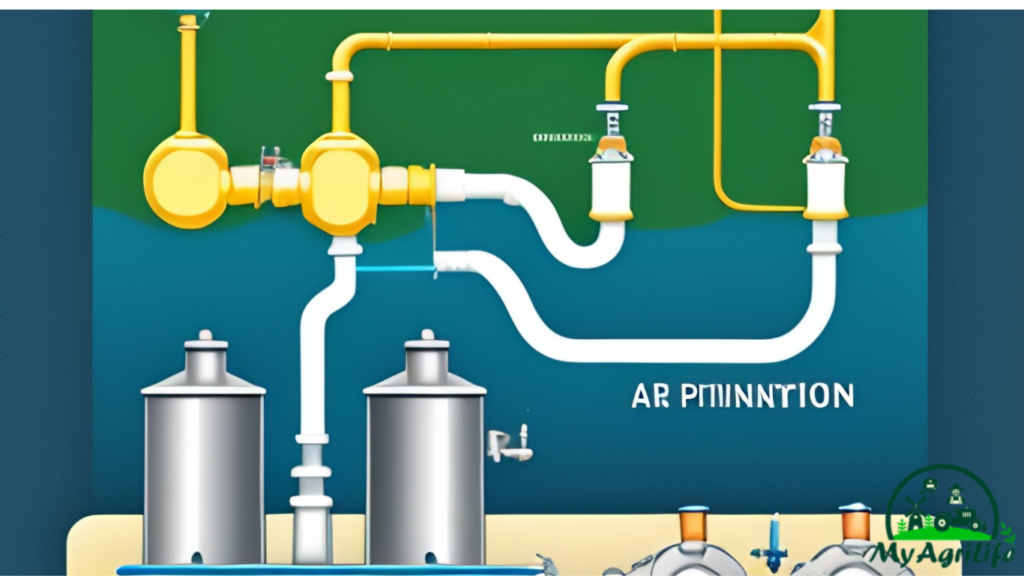
1.Crop water requirements: The amount of water needed for different crops varies depending on the plant species, growth stage, and weather conditions. Understanding the crop water requirements is essential for planning an effective irrigation system.
2.Soil type and quality: The soil type and quality can affect the way water is absorbed and stored, which in turn affects the irrigation system’s design and water application rate.
3.Water source: The availability of water and its quality should be assessed before designing the irrigation system. This includes identifying the source of water, the water quality, and the capacity of the water source.
4.Irrigation system efficiency: The efficiency of the irrigation system should be considered, including factors such as water application rate, water distribution uniformity, and losses due to evaporation and runoff.
5.Climate and weather patterns: The climate and weather patterns in the region can affect the timing and frequency of irrigation. Planning for different weather scenarios is important for managing water resources effectively.
6.Irrigation scheduling: The timing and frequency of irrigation should be planned based on the crop’s water requirements, soil type, and weather conditions.
7.Maintenance and operation: The irrigation system should be designed for ease of maintenance and operation. Regular maintenance and monitoring are important for ensuring the system is working efficiently and effectively.
8.Water conservation: Water conservation practices, such as using drip irrigation or mulching, should be incorporated into the irrigation plan to reduce water waste and increase water use efficiency.
By considering these key points, an effective irrigation plan can be developed that meets the crop’s water requirements while also conserving water resources and reducing environmental impacts.
Key rules for principles of irrigation water management
The principles of irrigation water management involve several key rules that can help ensure efficient and effective use of water resources. These rules include:
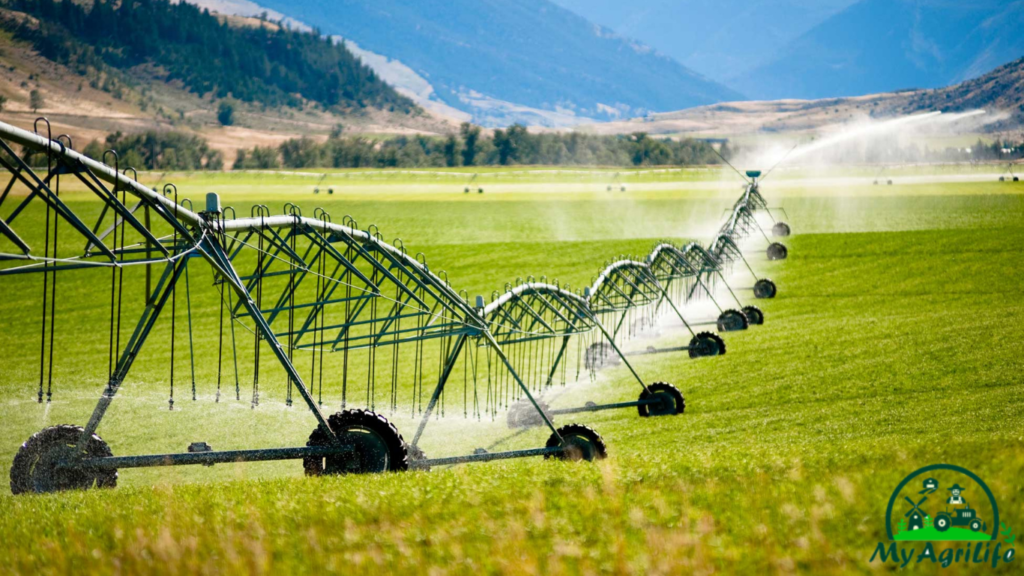
1.Know your crop: Understanding the water needs of your crop is essential for effective irrigation management. Factors such as the crop type, growth stage, and weather conditions can affect the crop’s water requirements.
2.Monitor soil moisture: Regular monitoring of soil moisture levels is important for determining when and how much water to apply. This can be done through techniques such as tensiometers, soil moisture sensors, or visual inspection.
3.Apply water efficiently: Using efficient irrigation methods such as drip irrigation, sprinkler irrigation, or subsurface irrigation can help reduce water waste and improve water use efficiency.
4.Use proper scheduling: Irrigation scheduling should be based on the crop’s water needs, soil type, and weather conditions. Overwatering or underwatering can lead to decreased crop yields or plant stress.
5.Consider water quality: The quality of the water source can affect the irrigation system’s efficiency and the health of the crops. Water quality testing should be conducted to ensure that the water source is suitable for irrigation.
6.Manage runoff and drainage: Proper management of runoff and drainage can help prevent soil erosion, nutrient leaching, and water pollution.
7.Practice water conservation: Water conservation practices such as mulching, cover cropping, and soil amendments can help reduce water use and improve soil health.
8.Monitor and adjust: Regular monitoring of the irrigation system’s performance is important for identifying problems and making necessary adjustments to improve efficiency and effectiveness.
By following these principles and rules of irrigation water management, farmers and landscapers can ensure that their irrigation system is operating at peak efficiency while also conserving water resources and reducing environmental impacts.
Different irrigation methods for reducing production cost
There are several irrigation methods that can help reduce production costs for farmers and landscapers, including:
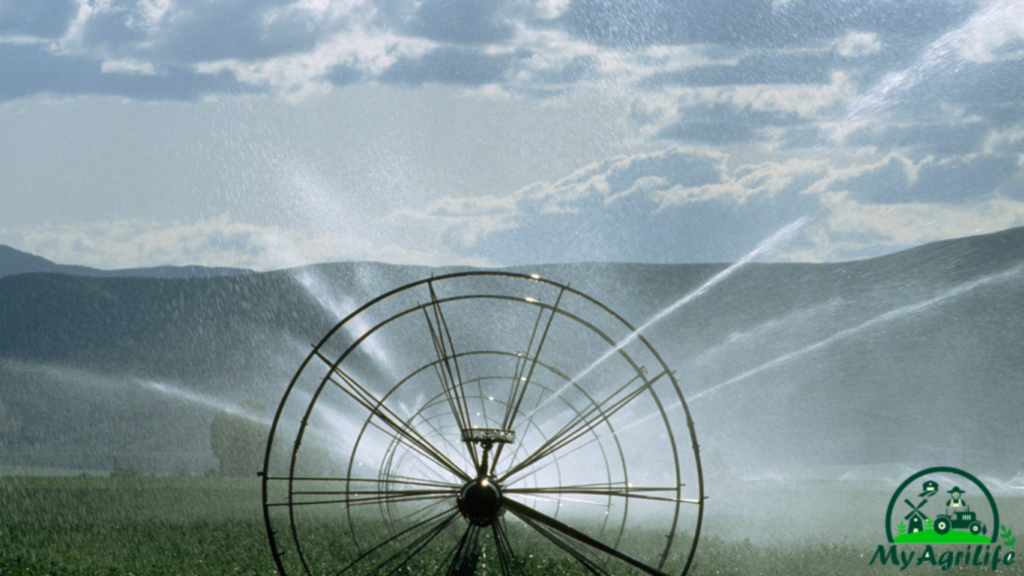
1.Drip irrigation: Drip irrigation delivers water directly to the plant roots, reducing water waste and allowing for more efficient use of water. This method can also reduce labor costs since it requires less frequent irrigation compared to surface irrigation.
2.Subsurface irrigation: Subsurface irrigation involves burying pipes or tubes underground, delivering water directly to the plant roots. This method can reduce water loss due to evaporation and decrease weed growth, reducing labor costs associated with weed control.
3.Conservation tillage: Conservation tillage involves leaving crop residues on the soil surface, reducing water evaporation and soil erosion. This method can reduce irrigation needs and save on labor costs associated with tilling and soil preparation.
4.Using cover crops: Cover crops help reduce soil erosion and water loss, which can reduce the amount of irrigation needed. Additionally, cover crops can provide natural weed control, reducing labor costs associated with weed management.
5.Mulching: Mulching involves covering the soil surface with a layer of organic material such as straw or wood chips. This method can help retain soil moisture, reducing irrigation needs and labor costs associated with watering.
6.Rainwater harvesting: Collecting and using rainwater for irrigation can help reduce the need for expensive irrigation systems and water bills. This method can also reduce labor costs associated with maintaining an irrigation system.
By using these irrigation methods, farmers and landscapers can reduce their production costs while also conserving water resources and reducing environmental impacts.
Effective sources of irrigation for more production
The most effective sources of irrigation for increasing production will depend on factors such as the type of crop, soil type, and climate in the region. However, some common sources of irrigation that can help increase production include:
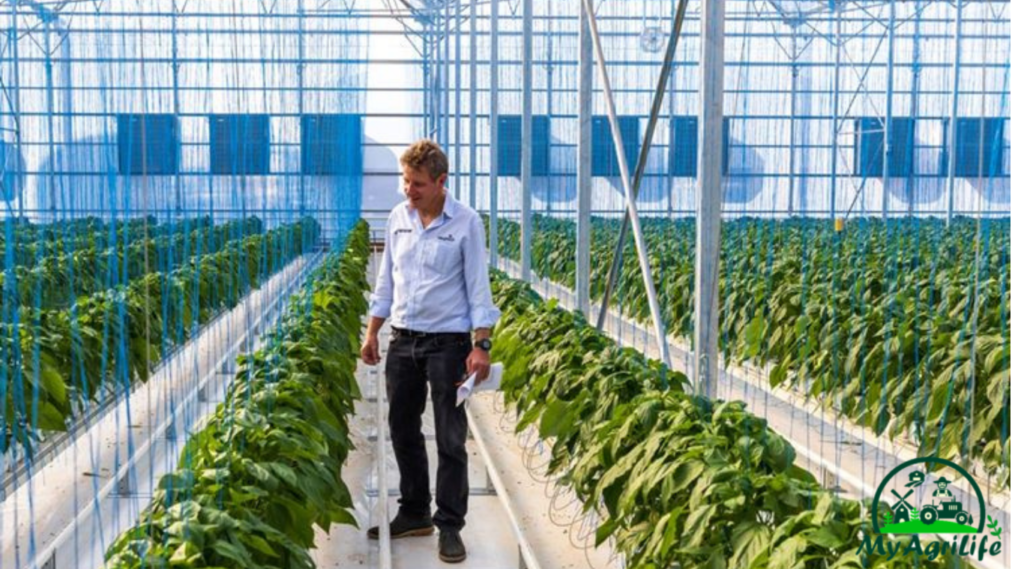
1.Groundwater: Groundwater is a reliable source of irrigation water and can be accessed through wells or boreholes. Groundwater is often less vulnerable to seasonal variations and can provide a constant supply of water for crops.
2.Surface water: Surface water sources such as rivers, streams, and reservoirs can provide a reliable source of water for irrigation. However, access to surface water can be limited by water rights or seasonal variations in water availability.
3.Rainwater harvesting: Collecting and using rainwater for irrigation can provide a free and reliable source of water for crops. Rainwater harvesting can be done through techniques such as rooftop harvesting, surface runoff harvesting, or underground storage.
4.Treated wastewater: Treated wastewater can provide a reliable source of irrigation water for crops, especially in areas where water resources are scarce. However, this method requires appropriate treatment and monitoring to ensure the water is safe for irrigation.
5.Desalination: Desalination involves removing salt and other impurities from seawater, providing a source of irrigation water in coastal regions. However, desalination can be expensive and energy-intensive.
By using these sources of irrigation water effectively, farmers and landscapers can increase their production and improve crop yields while also conserving water resources and reducing environmental impacts.
Factors to consider in choosing an irrigation method
When choosing an irrigation method, it is important to consider several factors to ensure that the irrigation system is effective and efficient. These factors include:
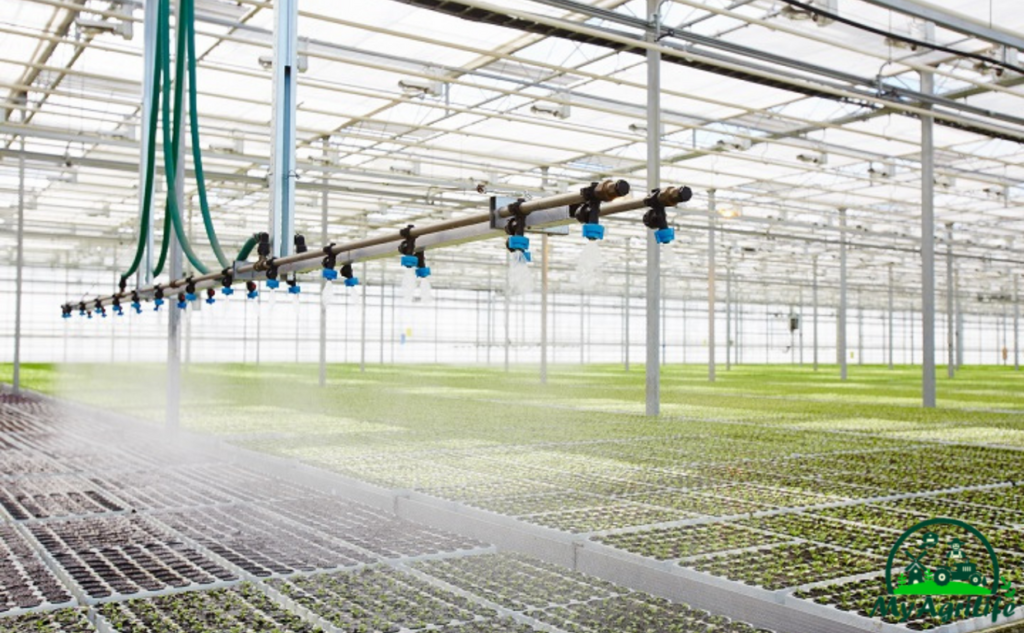
1.Crop type: Different crops have different water requirements and respond differently to various irrigation methods. Understanding the water needs of the crop is essential in selecting an appropriate irrigation method.
2.Soil type: Soil texture, structure, and depth can affect water infiltration rates and soil water holding capacity, which can influence the choice of irrigation method.
3.Climate and weather patterns: Rainfall patterns, temperature, and humidity can affect the frequency and amount of irrigation needed. Choosing an irrigation method that is appropriate for the local climate can help ensure that the crop receives the right amount of water.
4.Water availability: The source and availability of water will affect the choice of irrigation method. Availability of water can be influenced by factors such as location, time of year, and water rights.
5.Topography and terrain: Slope, elevation, and soil drainage can influence water distribution and irrigation efficiency. Choosing an irrigation method that is appropriate for the local topography can help ensure that water is distributed evenly across the field.
6.Labor and equipment: The availability of labor and equipment can influence the choice of irrigation method. Some irrigation methods may require more labor or specialized equipment, which can add to the cost of the irrigation system.
7.Cost: The cost of the irrigation system, including installation, operation, and maintenance, can also be a factor in choosing an appropriate irrigation method.
By considering these factors, farmers and landscapers can choose an irrigation method that is appropriate for their specific needs and resources, ensuring that the irrigation system is effective, efficient, and cost-effective.
Key rules for the importance of irrigation supplies
Irrigation supplies are essential for effective irrigation systems and can help ensure that crops receive the right amount of water at the right time. Some key rules for the importance of irrigation supplies include:
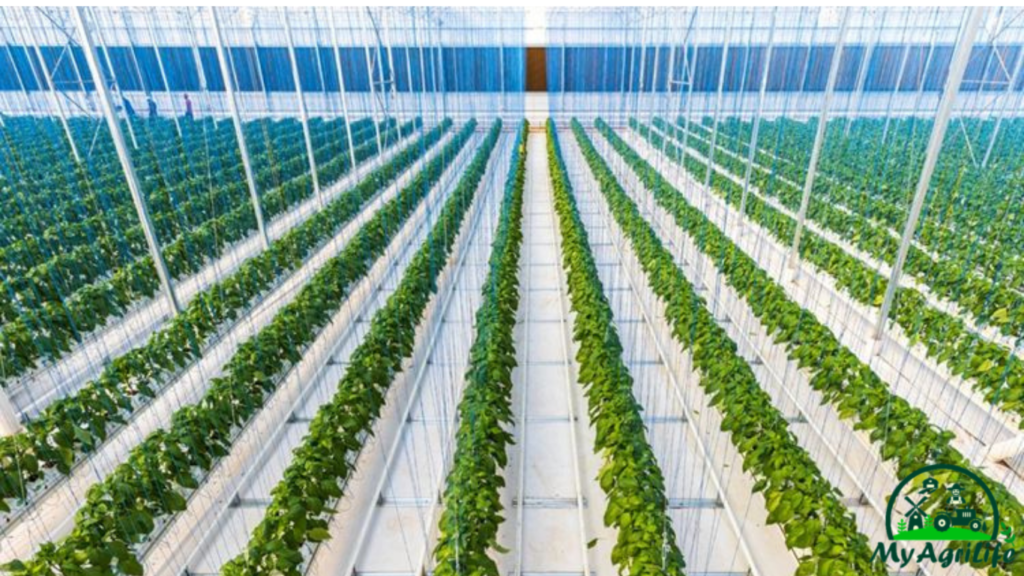
1.Reliable water supply: Irrigation supplies, such as pumps, pipes, valves, and filters, can help ensure that water is delivered to crops in a consistent and reliable manner. Reliable water supply is essential for ensuring that crops receive the right amount of water, preventing over or under-watering.
2.Efficient water use: Irrigation supplies can help farmers and landscapers use water more efficiently, reducing water waste and conserving water resources. For example, drip irrigation systems can deliver water directly to the plant roots, reducing water loss due to evaporation or runoff.
3.Improved crop yield: Irrigation supplies can help ensure that crops receive the right amount of water, improving crop yield and quality. By providing water at the right time and in the right amount, irrigation supplies can help farmers and landscapers maximize their crop yield and profitability.
4.Reduced labor costs: Irrigation supplies can help reduce labor costs associated with manual watering or inefficient irrigation systems. For example, automated irrigation systems can be programmed to deliver water at specific times, reducing the need for manual labor.
5.Sustainability: Irrigation supplies can help promote sustainable agriculture and landscaping practices by conserving water resources and reducing environmental impacts. By using efficient irrigation supplies, farmers and landscapers can reduce their water use and environmental footprint.
By investing in high-quality irrigation supplies and using them effectively, farmers and landscapers can improve the efficiency and effectiveness of their irrigation systems, maximizing crop yield and profitability while conserving water resources and promoting sustainable practices.
Most efficient way to irrigate your crops
The most efficient way to irrigate crops will depend on several factors such as crop type, soil type, climate, and available resources. However, some irrigation methods are generally considered more efficient than others. Here are some of the most efficient ways to irrigate crops:
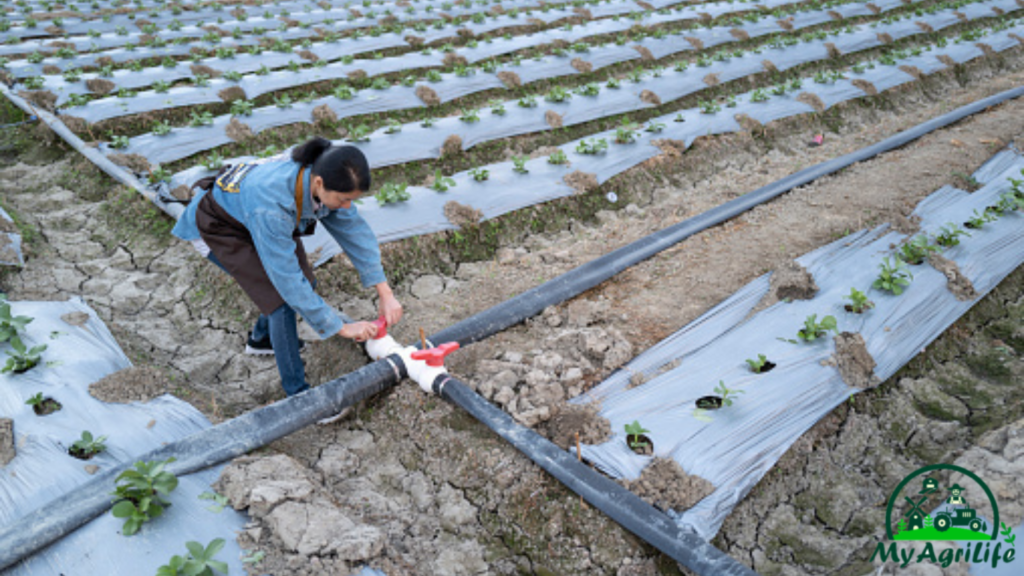
1.Drip Irrigation: Drip irrigation is a highly efficient method of delivering water directly to the root zone of plants. Water is delivered slowly through drip emitters or micro-sprinklers, reducing water loss due to evaporation or runoff. Drip irrigation can also reduce water use by up to 60% compared to other irrigation methods.
2.Subsurface Drip Irrigation: Subsurface drip irrigation involves burying drip tape or tubing below the soil surface, delivering water directly to the root zone. This method can reduce water loss due to evaporation and minimize weed growth, resulting in higher crop yields and reduced water use.
3.Sprinkler Irrigation: Sprinkler irrigation can be efficient when used properly. This method involves distributing water through sprinklers, which can cover large areas quickly and uniformly. By using low-pressure sprinklers and properly sizing the system, water loss due to evaporation or wind drift can be minimized.
4.Center Pivot Irrigation: Center pivot irrigation is a type of sprinkler irrigation that uses a pivot system to deliver water in a circular pattern. This method can be efficient when properly managed, with uniform water distribution and reduced water loss due to evaporation or wind drift.
5.Surface Irrigation: Surface irrigation involves flooding or furrowing fields with water. While this method can be less efficient than other methods, it can be appropriate for certain crops and soil types when managed properly to minimize water loss.
Overall, drip irrigation and subsurface drip irrigation are the most efficient ways to irrigate crops, particularly in areas with limited water resources. However, other methods such as sprinkler and center pivot irrigation can also be efficient when properly managed.
Low-cost irrigation techniques for more production
Low-cost irrigation techniques can help small-scale farmers increase their crop production and improve their livelihoods. Here are some low-cost irrigation techniques that can be effective:
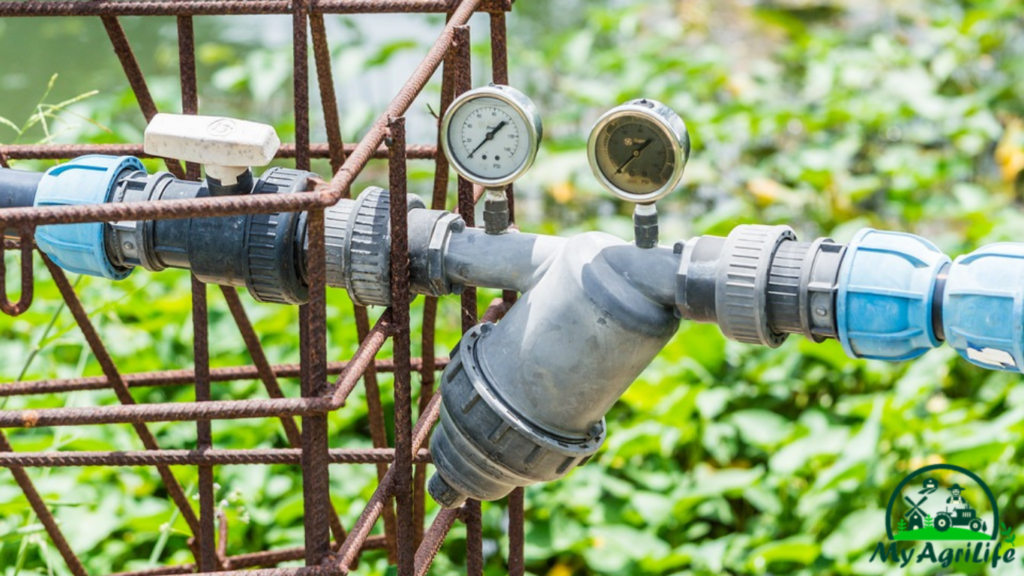
1.Rainwater harvesting: Farmers can collect rainwater in tanks or ponds during the rainy season and use it for irrigation during the dry season. This method can be low cost and effective for small-scale farmers.
2.Micro-irrigation: Micro-irrigation involves delivering water directly to the root zone of plants through drip or trickle irrigation systems. This method can be low cost and highly efficient, reducing water loss due to evaporation and minimizing weed growth.
3.Wicking beds: Wicking beds are raised garden beds that use capillary action to deliver water to plants through a wicking material. This method can be low cost and effective for small-scale vegetable gardens.
4.Furrow irrigation: Furrow irrigation involves digging small channels in the soil between rows of crops and filling them with water. This method can be low cost and effective for certain crops and soil types.
5.Bamboo drip irrigation: Farmers can create drip irrigation systems using bamboo pipes or tubes. This method can be low cost and effective for small-scale irrigation needs.
By using low-cost irrigation techniques, small-scale farmers can increase their crop yields and improve their food security, without incurring high costs. These techniques can also help reduce water use and promote sustainable agriculture practices.
Benefits of irrigation
Benefits of irrigation include:
1.Increased crop yields: Irrigation can provide crops with the right amount of water at the right time, improving crop yields and quality.
2.Improved food security: Irrigation can help ensure a consistent supply of food and increase the availability of crops during the dry season.
3.Reduced labor costs: Irrigation can help reduce labor costs associated with manual watering and increase the efficiency of crop production.
4.Conservation of water resources: Irrigation can help conserve water resources by using water efficiently and reducing water loss due to evaporation or runoff.
5.Promotion of sustainable agriculture: Irrigation can promote sustainable agriculture practices by improving soil health, reducing erosion, and promoting biodiversity.
6.Increased income: Irrigation can provide farmers with a reliable source of income by increasing crop yields and allowing them to grow crops throughout the year.
7.Diversification of crops: Irrigation can allow farmers to diversify their crops and grow high-value crops that require more water, which can increase their income.
8.Adaptation to climate change: Irrigation can help farmers adapt to climate change by reducing the impact of droughts and other extreme weather events on crop production.
Overall, irrigation can help improve food security, reduce poverty, and promote sustainable agriculture practices, while also benefiting the environment and conserving water resources.
Key rules for irrigation scheduling for more production
Irrigation scheduling is the process of determining when and how much water to apply to crops to ensure that they receive the right amount of water at the right time. Here are some key rules for effective irrigation scheduling for more production:
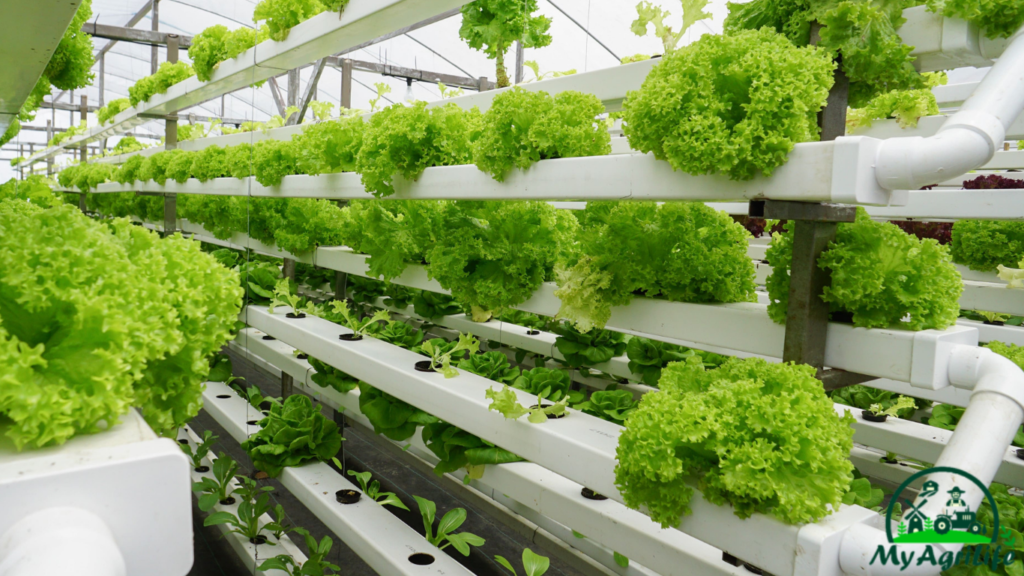
1.Monitor soil moisture: Regularly monitor soil moisture levels using soil moisture sensors, tensiometers, or other tools. This will help you determine when the soil needs water and avoid over- or under-watering.
2.Know your crop’s water needs: Different crops have different water requirements, depending on factors such as growth stage, soil type, and weather conditions. Know your crop’s water needs and adjust irrigation accordingly.
3.Use weather data: Use weather data, such as evapotranspiration (ET) rates, to estimate crop water use and adjust irrigation scheduling accordingly.
4.Plan ahead: Plan irrigation schedules in advance, based on weather forecasts, soil moisture levels, and crop water needs. This will help ensure that water is applied when and where it is needed.
5.Use efficient irrigation methods: Use efficient irrigation methods, such as drip irrigation or micro-sprinklers, to minimize water loss due to evaporation and ensure that water is delivered directly to the root zone of crops.
6.Avoid irrigating during the hottest part of the day: Irrigating during the hottest part of the day can result in water loss due to evaporation. Instead, irrigate early in the morning or late in the evening when temperatures are cooler.
7.Maintain irrigation equipment: Regularly maintain irrigation equipment, such as pumps, pipes, and valves, to ensure that water is delivered efficiently and effectively.
By following these key rules for irrigation scheduling, farmers can optimize their irrigation practices and ensure that their crops receive the right amount of water at the right time, leading to increased crop yields and more efficient use of water resources.
Effective objectives of irrigation management
The main objectives of irrigation management are to:
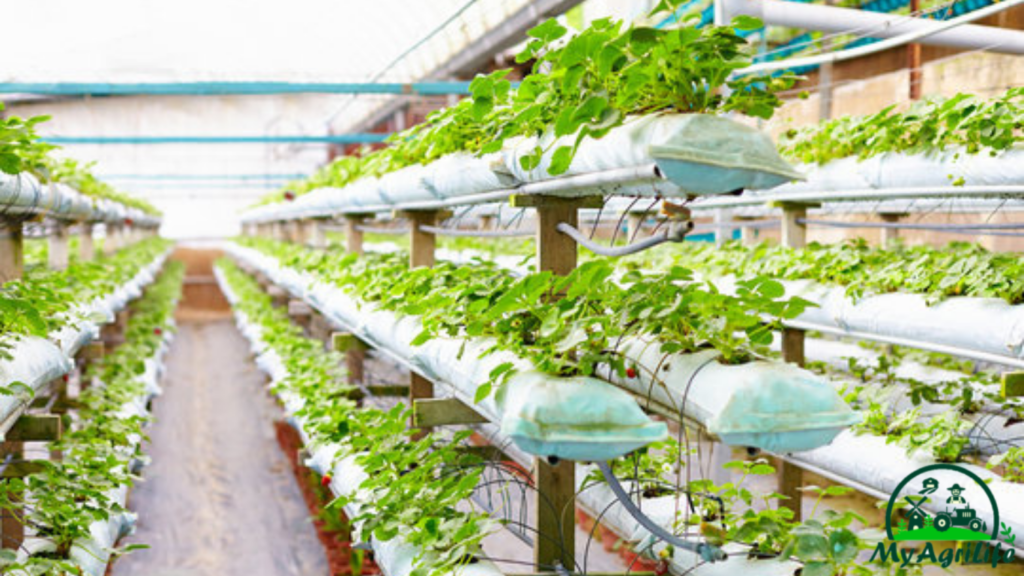
1.Maximize crop production: The primary objective of irrigation management is to ensure that crops receive the right amount of water at the right time to maximize their growth and production.
2.Optimize water use efficiency: Irrigation management aims to optimize water use efficiency by minimizing water loss due to evaporation, runoff, and deep percolation. This helps to conserve water resources and reduce the cost of irrigation.
3.Improve water quality: Irrigation management aims to improve water quality by reducing the amount of nutrients, sediments, and other pollutants that enter water bodies as a result of irrigation.
4.Prevent soil degradation: Irrigation management aims to prevent soil degradation by minimizing soil erosion, reducing soil compaction, and promoting soil health.
5.Minimize negative impacts on the environment: Irrigation management aims to minimize negative impacts on the environment by reducing water use, minimizing energy consumption, and reducing greenhouse gas emissions.
6.Ensure economic sustainability: Irrigation management aims to ensure economic sustainability by minimizing production costs and maximizing profits, while also ensuring long-term viability of the land and water resources.
By achieving these objectives, irrigation management can help ensure that farmers are able to produce crops efficiently and sustainably, while also conserving water resources, protecting the environment, and promoting economic development.
Main objectives of irrigation supply
The main objectives of irrigation supply are to:

1.Provide water to crops: The primary objective of irrigation supply is to provide water to crops to ensure their growth and production.
2.Optimize water use efficiency: Irrigation supply aims to optimize water use efficiency by minimizing water loss due to evaporation, runoff, and deep percolation. This helps to conserve water resources and reduce the cost of irrigation.
3.Ensure consistent and reliable water supply: Irrigation supply aims to ensure a consistent and reliable water supply to crops, even during periods of drought or water scarcity.
4.Ensure water quality: Irrigation supply aims to ensure water quality by providing water that is free from contaminants, sediments, and other pollutants that may harm crops.
5.Minimize energy consumption: Irrigation supply aims to minimize energy consumption by using energy-efficient pumps and other equipment to deliver water to crops.
6.Ensure economic sustainability: Irrigation supply aims to ensure economic sustainability by minimizing production costs and maximizing profits, while also ensuring long-term viability of the land and water resources.
By achieving these objectives, irrigation supply can help ensure that farmers are able to produce crops efficiently and sustainably, while also conserving water resources, protecting the environment, and promoting economic development.
Key rules to increase the overall efficiency of an irrigation system
Here are some key rules to increase the overall efficiency of an irrigation system:
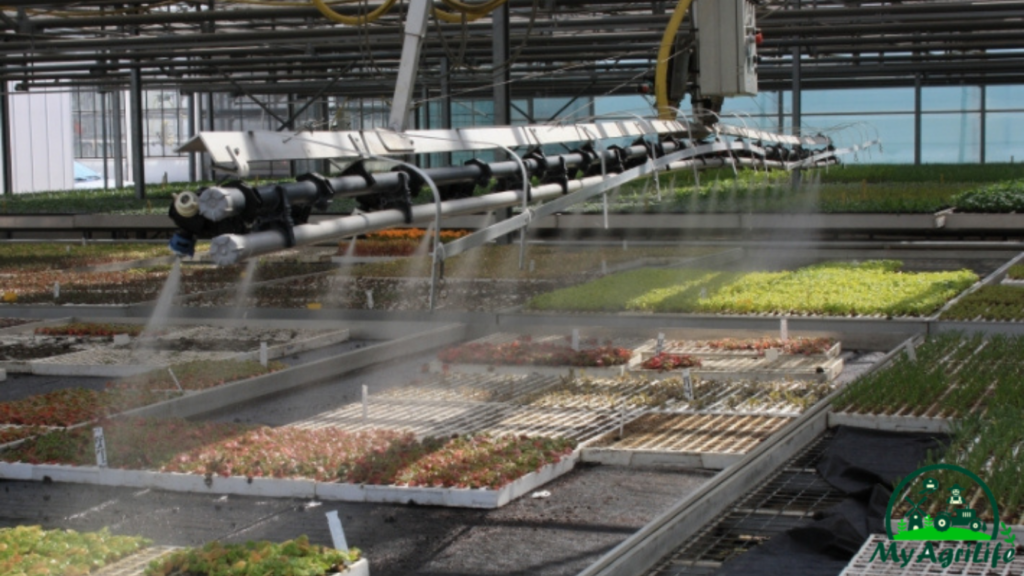
1.Proper system design: Proper system design is critical for efficient irrigation. The system design should be based on the crop water requirements, soil characteristics, topography, and climate conditions.
2.Regular maintenance: Regular maintenance is essential to keep the irrigation system functioning properly. This includes checking for leaks, cleaning filters, replacing damaged parts, and adjusting the system to account for changes in crop water requirements.
3.Proper scheduling: Proper scheduling of irrigation is essential to ensure that crops receive the right amount of water at the right time. This includes scheduling irrigation based on crop water requirements, soil moisture levels, and weather conditions.
4.Use of efficient irrigation methods: Efficient irrigation methods such as drip irrigation, micro-sprinklers, and low-pressure systems can help to minimize water loss due to evaporation and runoff.
5.Use of water-efficient practices: Water-efficient practices such as crop rotation, mulching, and cover cropping can help to minimize water use and increase soil moisture retention.
6.Use of sensors and automation: The use of sensors and automation can help to optimize irrigation scheduling and reduce water waste by ensuring that crops receive the right amount of water at the right time.
By following these key rules, farmers can increase the overall efficiency of their irrigation system, conserve water resources, reduce production costs, and improve crop yields.
Key rules for the best time to water plants
Here are some key rules for the best time to water plants:
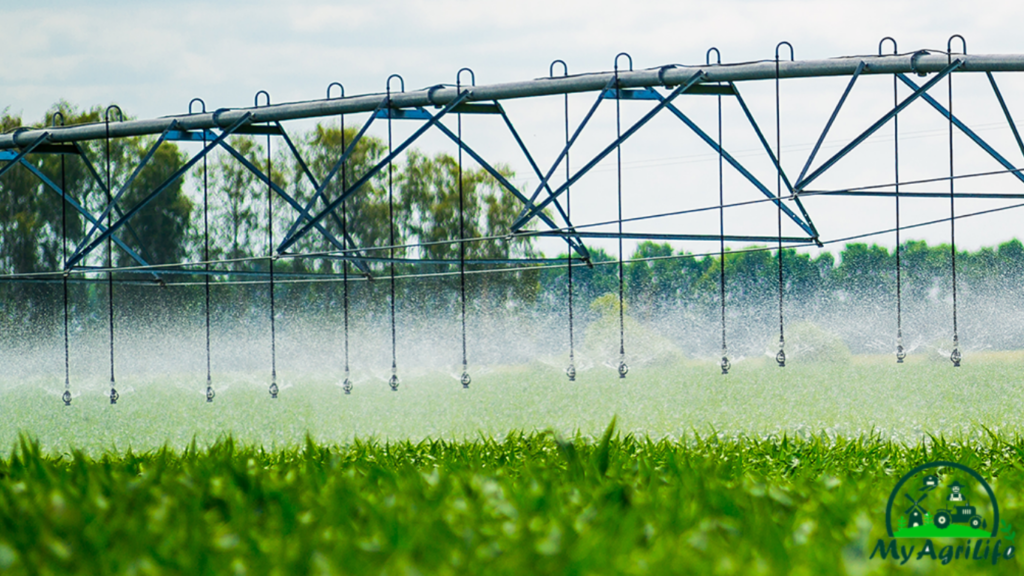
1.Water in the early morning: Watering in the early morning, before the sun is up and temperatures rise, is the best time to water plants. This allows water to penetrate the soil and reach the roots before it evaporates.
2.Avoid watering during the heat of the day: Watering during the heat of the day can cause water to evaporate before it can reach the roots of the plant. This can also lead to scorching of the leaves.
3.Water deeply but less frequently: It is better to water plants deeply but less frequently rather than watering lightly and frequently. This helps to encourage deep root growth and reduces water loss due to evaporation.
4.Avoid watering at night: Watering at night can create a moist environment that is conducive to fungal growth and other diseases. It can also lead to waterlogged soil, which can harm the roots of the plant.
5.Adjust watering based on weather conditions: Watering needs may vary based on weather conditions, such as rain, humidity, and temperature. Adjust watering accordingly to ensure that plants receive the right amount of water.
By following these key rules, gardeners and farmers can ensure that their plants receive the right amount of water at the right time, which can improve plant growth, reduce water waste, and prevent plant diseases.
Key factors in selecting the best irrigation method
Here are some key factors to consider when selecting the best irrigation method:
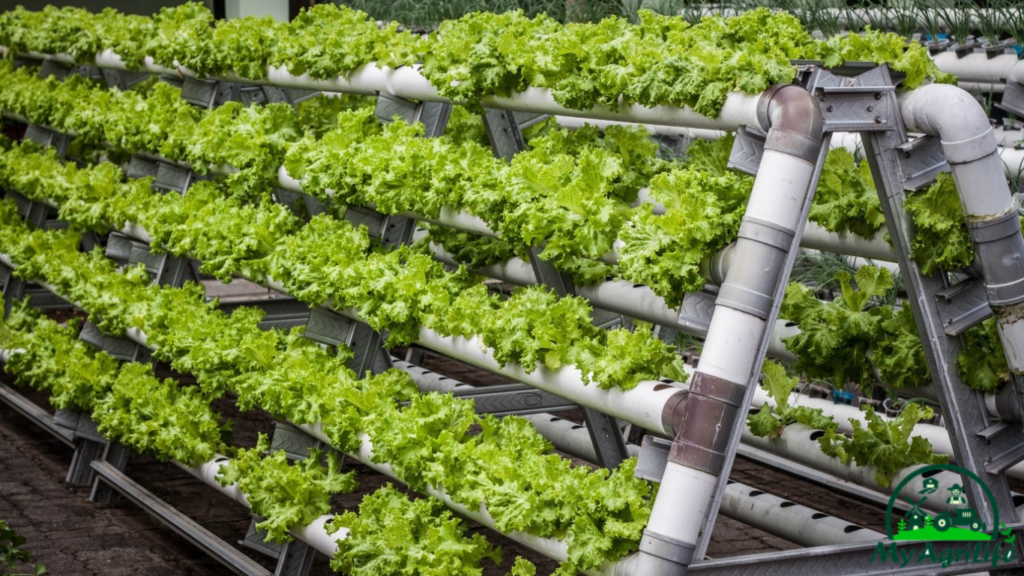
1.Crop and soil type: Different crops and soil types have different water requirements, which should be taken into account when selecting an irrigation method.
2.Water availability: The amount and quality of water available for irrigation can influence the choice of irrigation method. Some methods require more water than others, and some may not be suitable for use with low-quality water sources.
3.Climate: The local climate can affect the choice of irrigation method. For example, in areas with high evaporation rates, methods that minimize water loss through evaporation may be preferred.
4.Topography: The topography of the land can also influence the choice of irrigation method. Some methods may be more suitable for flat or gently sloping land, while others may be better suited for steep slopes.
5.Cost: The cost of installing and operating different irrigation methods can vary greatly. It is important to consider the costs of each method when selecting the best option for a given situation.
6.Labor availability: Some irrigation methods require more labor than others, and the availability of labor can influence the choice of method.
7.Environmental impact: The environmental impact of irrigation methods should also be considered. Some methods may have a greater impact on soil quality, water quality, or wildlife habitat than others.
By considering these key factors, farmers and gardeners can select the best irrigation method for their specific needs, which can help to optimize crop yields, conserve water resources, and reduce production costs.
Key rules/tips for minimizing irrigation costs while maintaining yields and profits
Here are some key rules/tips for minimizing irrigation costs while maintaining yields and profits:
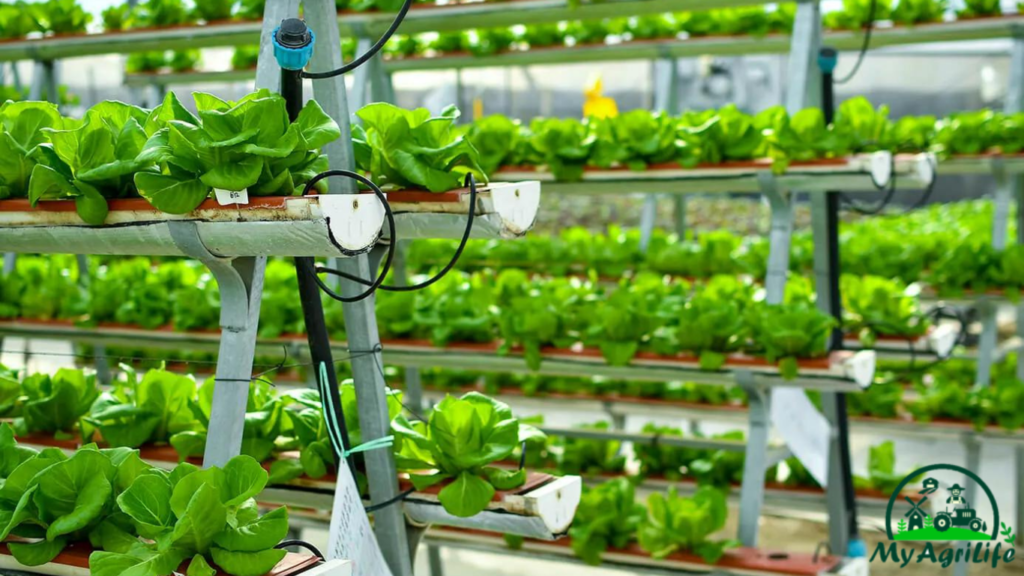
1.Use water-efficient irrigation systems: Choose irrigation systems that are designed to conserve water, such as drip irrigation or micro-sprinkler systems. These systems deliver water directly to the roots of plants, reducing evaporation and water loss.
2.Use sensors and automation: Install soil moisture sensors and weather stations to automate irrigation and optimize water usage. This ensures that crops receive the right amount of water at the right time, minimizing water waste.
3.Use recycled water: Use recycled water for irrigation when possible. This can reduce the cost of water and minimize the amount of wastewater that needs to be treated.
4.Improve soil health: Healthy soils retain more water and require less irrigation. Use techniques such as cover cropping, crop rotation, and organic matter addition to improve soil health and reduce irrigation needs.
5.Use mulch: Mulch can help to reduce evaporation and retain moisture in the soil. This can reduce the need for irrigation and lower water costs.
6.Monitor and maintain irrigation systems: Regularly inspect and maintain irrigation systems to ensure they are functioning properly. This can prevent leaks and other problems that can waste water and increase costs.
7.Manage irrigation scheduling: Use irrigation scheduling techniques such as soil moisture monitoring, plant water stress indicators, and weather forecasting to optimize irrigation timing and reduce water waste.
By following these key rules/tips, farmers and gardeners can minimize irrigation costs while maintaining yields and profits. This can help to improve the sustainability of agricultural practices and ensure the long-term viability of farming operations.
Most effective method of irrigation management
There is no one-size-fits-all answer to the most effective method of irrigation management, as the optimal method will depend on various factors such as the type of crops, soil type, climate, water availability, and other site-specific conditions.
However, some generally effective methods of irrigation management include:
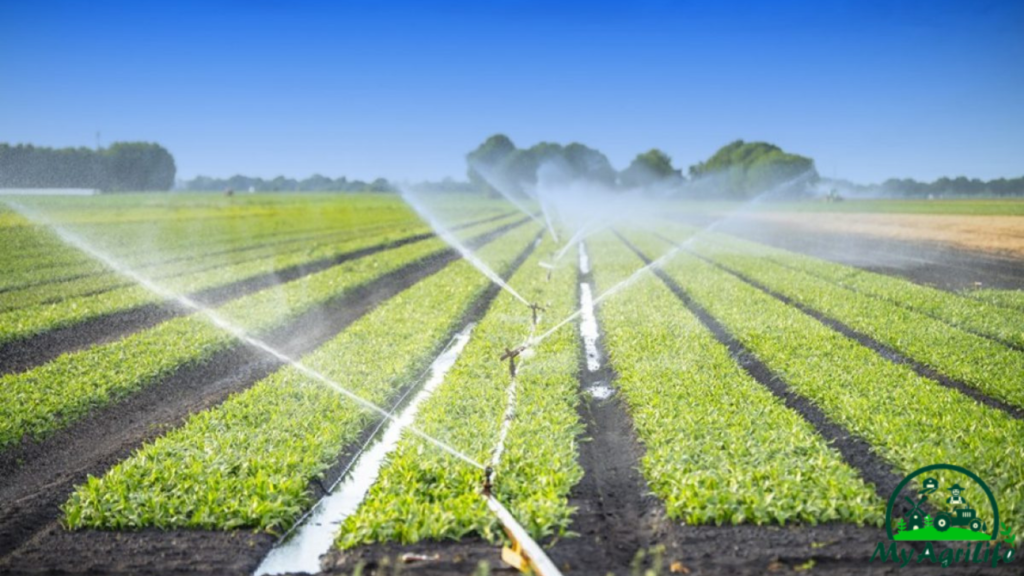
1.Irrigation scheduling: This involves timing irrigation based on crop water requirements, weather conditions, and soil moisture levels. By scheduling irrigation appropriately, water can be applied when it is needed, and the risk of over or under-watering can be minimized.
2.Soil moisture monitoring: This involves regularly measuring soil moisture to determine when to irrigate. This can be done using sensors or by digging a small hole in the soil and feeling the moisture level with your hand. By monitoring soil moisture, farmers can avoid over-watering, which can waste water and harm crop growth.
3.Drip irrigation: Drip irrigation systems apply water directly to the root zone of plants, reducing water loss through evaporation and run-off. Drip irrigation systems can be designed to match crop water requirements, which can help to reduce water waste and increase irrigation efficiency.
4.Mulching: Mulching involves covering the soil around plants with organic material to reduce evaporation and keep the soil moist. This can help to reduce the amount of irrigation needed, while also improving soil health and reducing weed growth.
5.Crop rotation and cover cropping: Rotating crops and planting cover crops can help to improve soil health, reduce water demand, and increase irrigation efficiency. By rotating crops, farmers can avoid planting crops that have high water needs in consecutive seasons.
Overall, the most effective method of irrigation management will depend on the specific conditions of the farm or garden, and may require a combination of these and other methods. Effective irrigation management can help to optimize crop yields, conserve water resources, and reduce production costs.
Techniques to improve irrigation efficiency
Here are some techniques to improve irrigation efficiency:
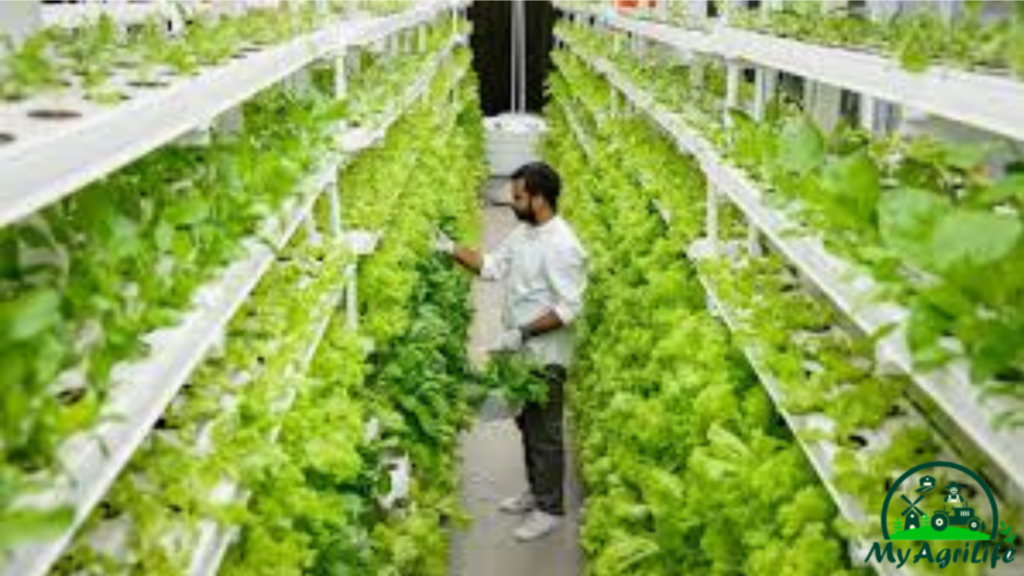
1.Use water-efficient irrigation systems: Choose irrigation systems that are designed to conserve water, such as drip irrigation or micro-sprinkler systems. These systems deliver water directly to the roots of plants, reducing evaporation and water loss.
2.Improve soil health: Healthy soils retain more water and require less irrigation. Use techniques such as cover cropping, crop rotation, and organic matter addition to improve soil health and reduce irrigation needs.
3.Manage irrigation scheduling: Use irrigation scheduling techniques such as soil moisture monitoring, plant water stress indicators, and weather forecasting to optimize irrigation timing and reduce water waste.
4.Use mulch: Mulch can help to reduce evaporation and retain moisture in the soil. This can reduce the need for irrigation and lower water costs.
5.Maintain irrigation systems: Regularly inspect and maintain irrigation systems to ensure they are functioning properly. This can prevent leaks and other problems that can waste water and increase costs.
6.Use recycled water: Use recycled water for irrigation when possible. This can reduce the cost of water and minimize the amount of wastewater that needs to be treated.
7.Use soil amendments: Certain soil amendments such as hydrogels can improve soil moisture retention and reduce the need for irrigation.
8.Plant water-efficient crops: Choose crops that have lower water requirements to reduce the amount of irrigation needed.
By implementing these techniques, farmers and gardeners can improve irrigation efficiency and reduce water waste, leading to better crop yields and lower production costs.
irrigation system conclusion
In conclusion, irrigation systems are an essential component of modern agriculture and horticulture. These systems provide a reliable and consistent source of water to crops, improving yields and crop quality. There are many different types of irrigation systems available, each with their own advantages and disadvantages. The choice of irrigation system will depend on various factors, including crop type, soil type, climate, and water availability.
Effective irrigation planning and management are critical to optimizing irrigation efficiency, conserving water resources, and reducing production costs. By selecting appropriate irrigation methods, scheduling irrigation timing, improving soil health, and maintaining irrigation systems, farmers and gardeners can improve irrigation efficiency, increase crop yields, and reduce water waste.
Overall, the proper design, installation, and management of irrigation systems are essential for sustainable agriculture and horticulture practices. By using irrigation systems effectively, farmers and gardeners can increase their productivity, reduce their environmental impact, and ensure long-term success.









